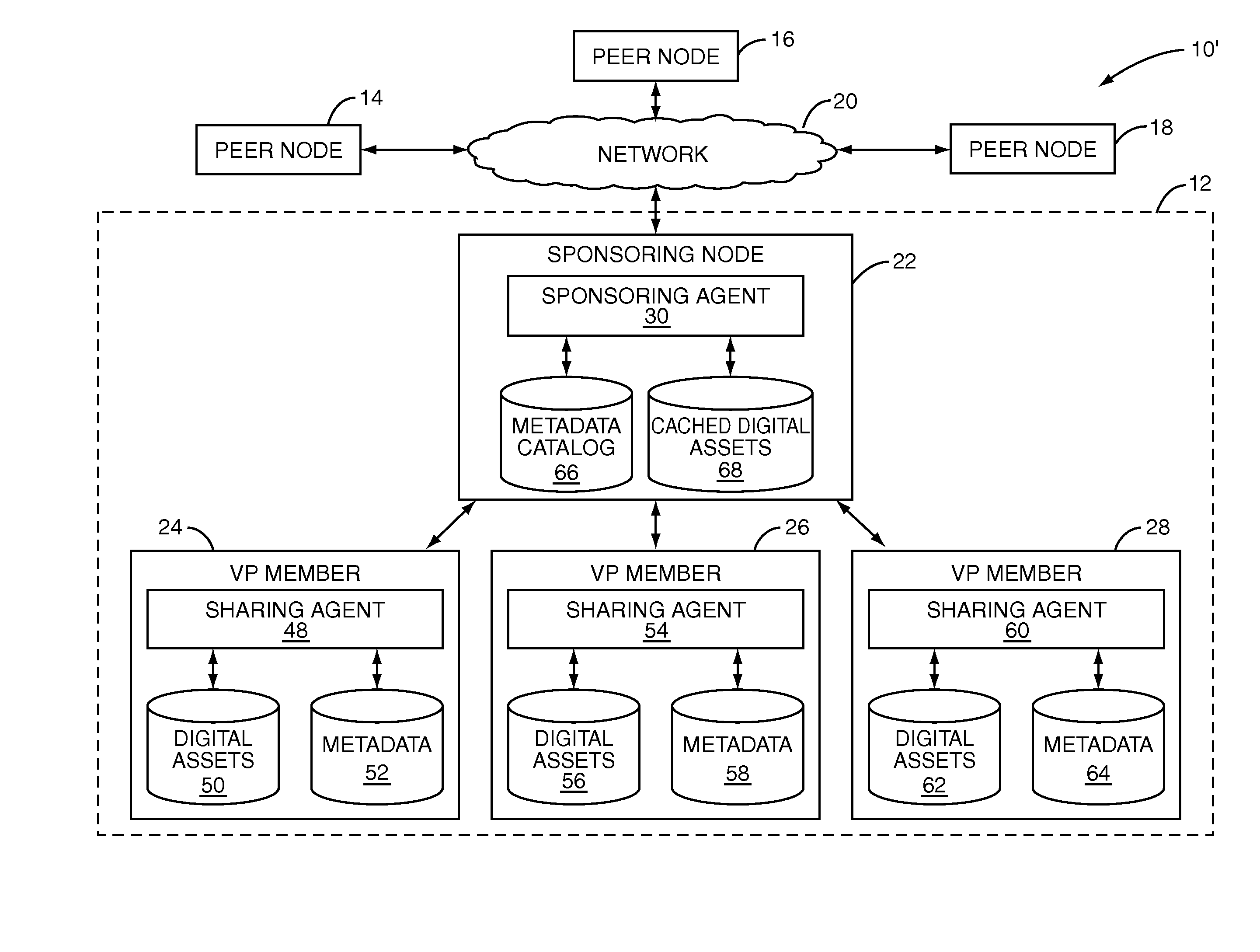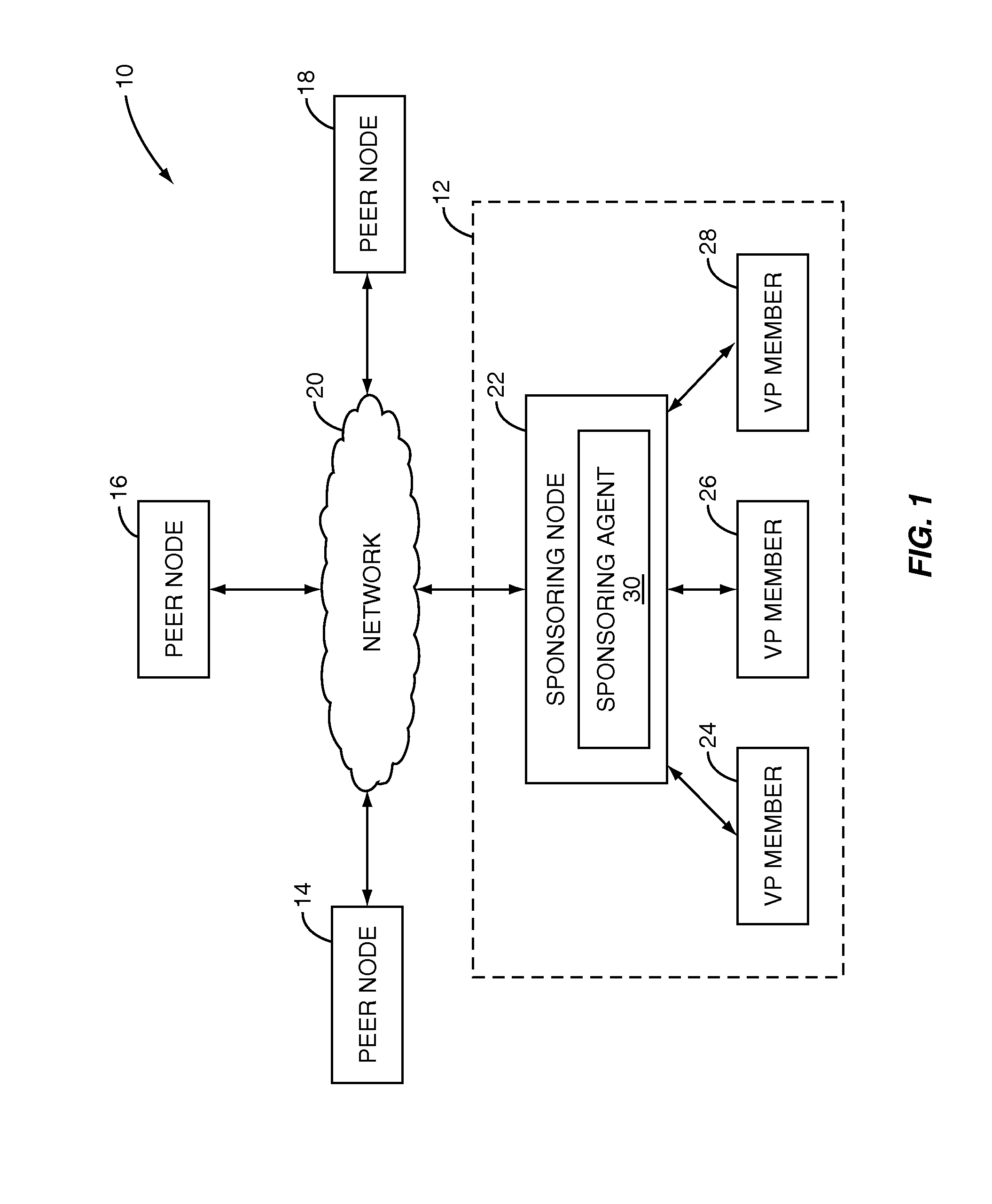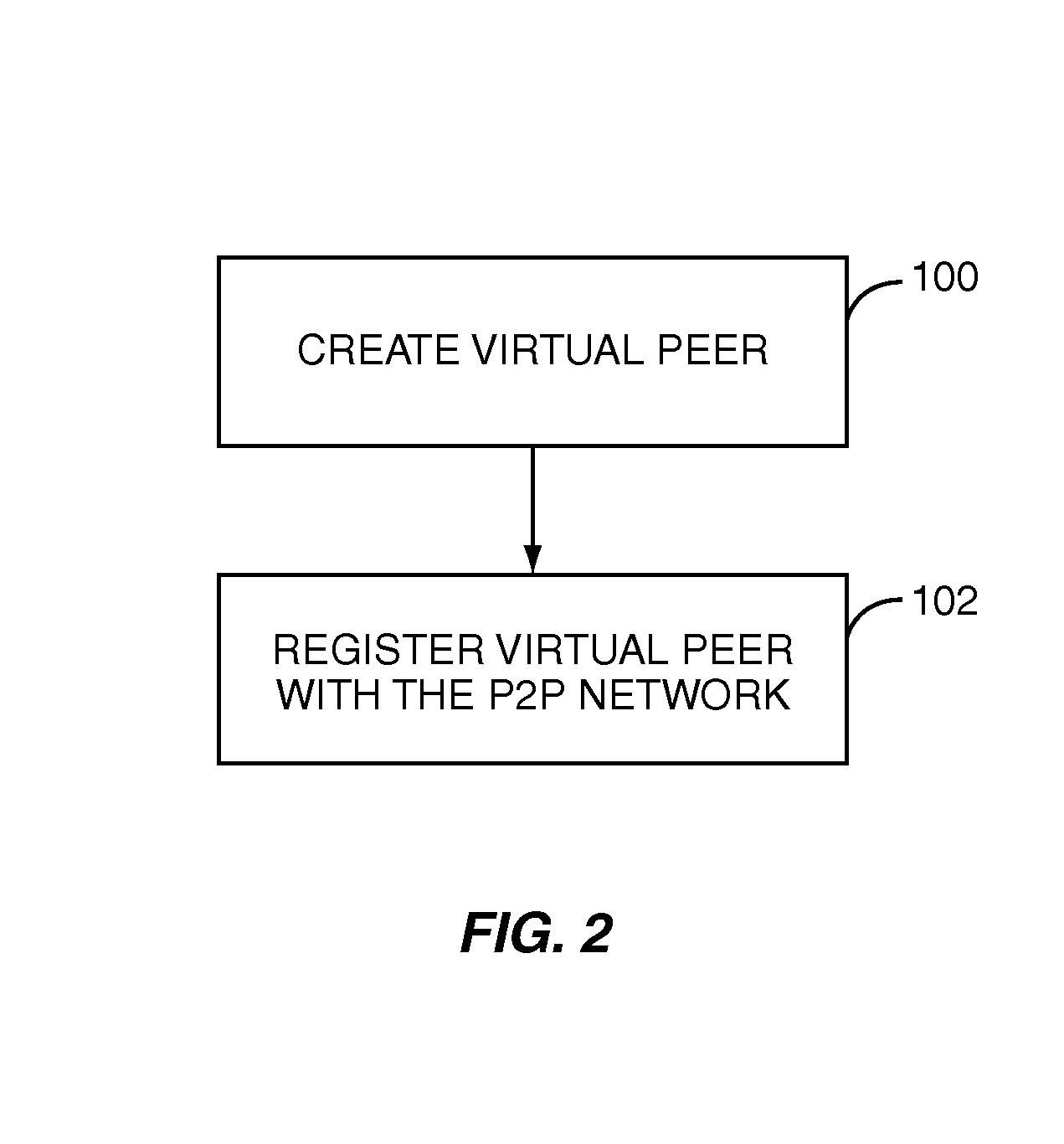Virtual peer for a content sharing system
a content sharing and peer technology, applied in the field of peer-to-peer content sharing systems, can solve the problems of not being transparent to clients, not being able to address all of the user's peer devices using a single request, so as to achieve efficient content request service
- Summary
- Abstract
- Description
- Claims
- Application Information
AI Technical Summary
Benefits of technology
Problems solved by technology
Method used
Image
Examples
second embodiment
[0048]FIG. 3B illustrates the operation of the sponsoring agent 30 according to the present invention. Generally, in this embodiment, the sponsoring node 30 operates to effect a by-pass connection between the peer node 14 and the VP member 24. First, the sponsoring agent 30 receives a request from the peer node 14 on behalf of the virtual peer 12 (step 300). The sponsoring agent 30 then processes the request (step 302). In one embodiment, the sponsoring agent 30 is configured or implemented such that by-pass connections are established for all requests. However, in another embodiment, the sponsoring agent 30 uses one or more rules to determine whether a by-pass connection is to be established. The rules may be general rules applicable to all of the VP members 24-28 or may be member specific rules. As an example, the sponsoring agent 30 may having a general rule that requests for digital assets having a file size greater than a predetermined threshold are to be processed by effecting...
third embodiment
[0054]FIG. 3C illustrates the operation of the sponsoring agent 30 according to the present invention. Generally, in this embodiment, the sponsoring node 30 operates to direct the VP member 24 to respond directly to the peer node 14, thereby effecting a by-pass connection between the peer node 14 and the VP member 24. First, the sponsoring agent 30 receives a request from the peer node 14 on behalf of the virtual peer 12 (step 400). The sponsoring agent 30 then processes the request (step 402). In one embodiment, the sponsoring agent 30 is configured or implemented such that by-pass connections are established for all requests. However, in another embodiment, the sponsoring agent 30 uses one or more rules to determine whether a by-pass connection is to be established. As discussed above, the rules may be general rules applicable to all of the VP members 24-28 or may be member specific rules. The rules may consider criteria such as the file size of the requested digital asset, the ca...
fourth embodiment
[0059]FIG. 3D illustrates the operation of the sponsoring agent 30 according to the present invention. Generally, this embodiment is similar to that in FIG. 3C. However, in this embodiment, the VP member 24 uses the credentials of the virtual peer 12 when directly responding to the peer node 14 such that the identity of the VP member 24 is not revealed to the peer node 12. To the peer node 14, it appears as though the virtual peer 12, rather than the VP member 24, provides the response.
[0060]More specifically, in this example, the sponsoring agent 30 provides the credentials of the virtual peer 12 to the VP members 24-28 during, for example, registration of the VP members 24-28 with the virtual peer 12 (step 500). Alternatively, the virtual peer credentials may be provided to the VP member 24 as needed. The credentials of the virtual peer 12 may include all information needed by the VP member 24 to send non-repudiated messages to the P2P network on behalf of the virtual peer 12. The...
PUM
 Login to View More
Login to View More Abstract
Description
Claims
Application Information
 Login to View More
Login to View More - R&D
- Intellectual Property
- Life Sciences
- Materials
- Tech Scout
- Unparalleled Data Quality
- Higher Quality Content
- 60% Fewer Hallucinations
Browse by: Latest US Patents, China's latest patents, Technical Efficacy Thesaurus, Application Domain, Technology Topic, Popular Technical Reports.
© 2025 PatSnap. All rights reserved.Legal|Privacy policy|Modern Slavery Act Transparency Statement|Sitemap|About US| Contact US: help@patsnap.com



